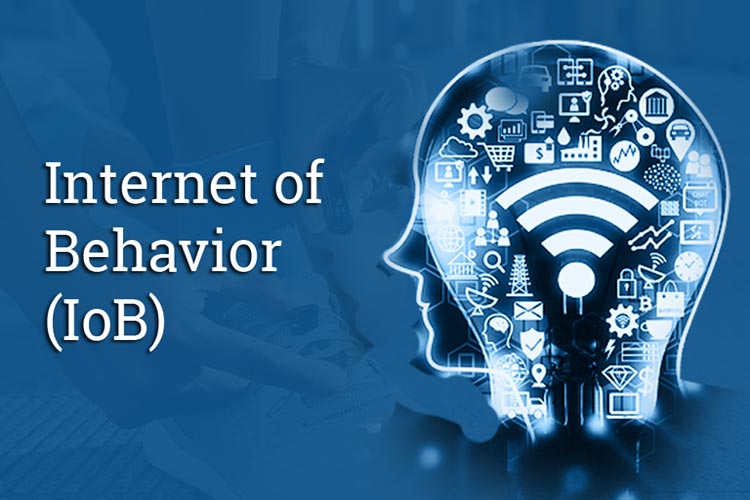Title: Internet of Behavior (IoB): The Next Frontier in Personalization
-
Aug, Sun, 2024
Title: Internet of Behavior (IoB): The Next Frontier in Personalization
The world of software development is continuously evolving, and one of the most exciting emerging trends is the Internet of Behavior (IoB). While many are familiar with the Internet of Things (IoT)—which connects physical devices to the web—IoB goes a step further by tracking, analyzing, and interpreting how users interact with these devices and platforms.
Although still in its early stages, IoB holds the potential to reshape how businesses engage with users and create tailored experiences. According to Gartner, by 2023, nearly 40% of the world’s population will have their behaviors tracked through IoB. So, what does this mean for developers, startups, and users? Let’s dive in.
What is the Internet of Behavior (IoB)?
At its core, IoB takes the concept of IoT data collection and applies it to human behavior. It’s about more than just gathering data from smart devices—it’s about analyzing how users interact with apps, websites, and connected devices. This behavioral data provides insight into preferences, habits, and patterns, allowing businesses to refine their products and services for a more personalized user experience.
For example, imagine an app that not only tracks how often you use it but why and how you use certain features. This behavioral insight can help developers optimize the app, adjust content based on preferences, and even predict what features users might want next.
How IoB Enhances Personalization
In today’s digital world, personalization has shifted from being a luxury to a necessity. Users want tailored experiences that cater to their specific needs, preferences, and behaviors. IoB is making this level of personalization possible by offering developers a new way to understand user behavior and design smarter, more adaptive software.
Let’s look at two major platforms that already use IoB principles to create a hyper-personalized experience:
- YouTube’s Algorithm Magic
YouTube leverages IoB by analyzing how users interact with videos—tracking what people watch, how long they watch it, which videos they skip, and what they search for. This data helps its algorithm recommend new content that aligns with each user’s unique preferences.
When you open YouTube, the recommended videos on your home page aren’t random—they’re based on your past behavior. You’re more likely to find content you enjoy, which keeps you engaged and increases the platform’s value to you as a user.
- Facebook’s Personalized Ads
Facebook has long used behavioral data to personalize its ad experience. By tracking user activities such as the pages they like, the content they interact with, and even the things they buy or search for online, Facebook delivers highly targeted ads. This is a prime example of how IoB enables businesses to create personalized marketing strategies that resonate with individuals based on their unique behavior patterns.
The Impact of IoB on Startups
For startups, IoB offers a powerful tool to differentiate themselves in a competitive market. Personalization can drive engagement, improve customer retention, and foster loyalty, all of which are critical for early-stage companies.
Here’s how IoB can benefit startups:
- Hyper-Personalized User Experiences: By analyzing user behavior, startups can tailor app features, notifications, and content delivery to meet the specific needs and preferences of each user.
- Data-Driven Product Development: Startups can use IoB data to inform their product roadmap. By understanding how users interact with an app or platform, businesses can prioritize features that align with user preferences, improving their overall experience.
- Smarter Marketing Campaigns: IoB allows startups to create more effective marketing strategies by targeting potential customers based on their behaviors and habits. For example, if a user frequently visits certain categories on an e-commerce app, IoB data can help marketers offer personalized product recommendations or discounts.
- Boosting User Engagement: With IoB, startups can track when users drop off or stop interacting with an app and adjust the user interface, features, or content to re-engage them.
Challenges of IoB Adoption
Despite its benefits, IoB isn’t without its challenges. Data privacy and security are top concerns for users, especially when businesses are collecting and analyzing detailed behavioral data. As IoB grows in adoption, startups and corporations alike must implement robust data protection strategies to ensure users’ privacy is respected and data is handled ethically.
Additionally, developers need to tread carefully to avoid over-personalization, which can sometimes lead to user discomfort. Striking the right balance between personalized experiences and respecting user autonomy is key to successfully leveraging IoB.
The Future of IoB: What’s Next?
As personalization becomes a central feature of digital experiences, the use of IoB is likely to grow. We’re only scratching the surface of what’s possible. Imagine a world where your favorite apps and platforms predict your needs, adjust in real-time to your preferences, and provide intuitive suggestions based on your behavior.
The opportunities for businesses are immense. Startups can harness IoB to create next-level personalized services, and corporate giants will continue to refine their offerings to keep users engaged. For developers and entrepreneurs, learning to work with IoB is a step towards building smarter, more user-centric applications that deliver real value.
Conclusion: The Time to Embrace IoB is Now
The Internet of Behavior is poised to revolutionize how we interact with digital products. Whether you’re a startup looking to carve out a niche or an established business aiming to stay ahead, IoB is the key to creating truly personalized experiences that resonate with users.
As this trend continues to grow, it’s time for developers and businesses to explore how IoB can be used to deliver more intelligent, behavior-driven solutions. Are you ready to embrace the future of personalized digital experiences?

